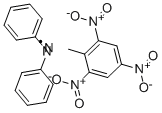A,A二苯基Β苦基肼基游离基即DPPH自由基,在特定波长下测定 DPPH 与抗氧化物质反应前后吸收值的变化可定量测定被测物质的抗氧化能力。DPPH 法是测定茶抗氧化性能的一种快速简便的方法,测定条件掌握得当,可以获得较好的测定稳定性。
DPPH (2,2-Diphenyl-1-picrylhydrazyl) 是一种稳定的自由基,可用于测量抗氧化剂的自由基清除活性。DPPH 中氮原子的奇数电子通过从抗氧化剂吸收氢原子而还原为相应的肼。DPPH 方法可用于水性和非极性有机溶剂中,并可用于检查亲水性和亲脂性抗氧化剂。
DPPH shows a strong absorption band at 517 nm due to its odd electron and solution appears a deep violet colour, the absorption vanishes as the electron pairs off. The resulting decolorization is stoichiometric with respect to the number of electrons taken up. The alcoholic solutions of 0.5 mM are densely colored and at this concentration, the Lambert-Beer law is obeyed over the useful range of absorption.
DPPH assay is a rapid, simple, inexpensive and widely used method to measure the ability of compounds to act as free radical scavengers or hydrogen donors, and to evaluate antioxidant activity of foods. It can also be used to quantify antioxidants in complex biological systems, for solid or liquid samples. This method is easy and applies to measure the overall antioxidant capacity and the free radical scavenging activity of fruit and vegetable juice. This assay has been successfully utilized for investigating antioxidant properties of wheat grain and bran, vegetables, conjugated linoleic acids, herbs, edible seed oils, and flours in several different solvent systems including ethanol, aqueous acetone, methanol, aqueous alcohol and benzene. It is a convenient method for the antioxidant assay of cysteine, glutathione, ascorbic acid, tocopherol and polyhydroxy aromatic compounds, for olive oil, fruits, juices and wines.


